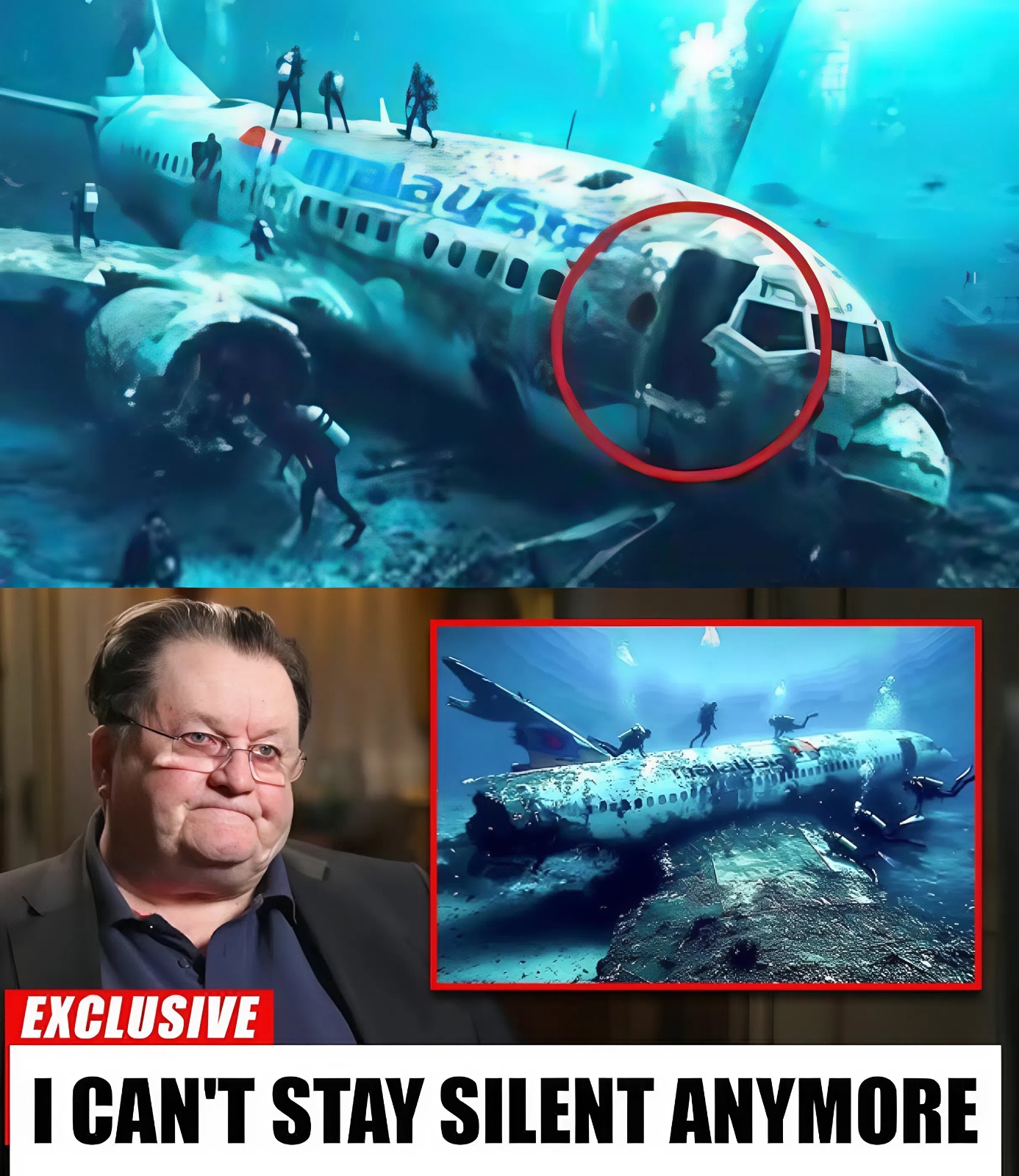“I Found Out Where MH370 REALLY Is”: Richard Godfrey’s Shocking Claim and the Search for Truth
On the night of March 8, 2014, Malaysia Airlines Flight MH370 disappeared from radar screens, carrying 239 people into one of the greatest mysteries of the modern era.
No distress call, no confirmed wreckage, and not a single survivor—just an empty sky and a world left searching for answers. For more than a decade, the fate of MH370 has confounded experts and haunted families.
Over $200 million has been spent scouring the ocean floor, yet the jet’s final resting place remains unknown.
Now, in a stunning twist, retired British engineer Richard Godfrey says he’s cracked the code. Using a method that leverages faint, nearly invisible radio signals—something no one else thought to check—Godfrey claims to know exactly where MH370 lies.

Some scientists are skeptical, others are amazed, and the world is watching. If Godfrey is right, we could finally be on the verge of solving aviation’s greatest mystery.
The Night MH370 Vanished
It was a routine red-eye flight from Kuala Lumpur to Beijing. At 12:41 a.m., MH370 took off as planned. Less than an hour later, the plane made its last voice contact with air traffic control.
Minutes after that, it vanished from civilian radar. The disappearance sparked a massive international search effort, involving dozens of countries and the most advanced technology available.
But as days turned into weeks and months, the search yielded little more than heartbreak. Satellite “handshakes” suggested the plane had turned south, flying for hours before running out of fuel over the southern Indian Ocean.
Despite extensive searches, no confirmed wreckage was found—only a handful of debris pieces washed up years later, thousands of miles from the presumed crash site.
Enter Richard Godfrey: The Engineer Who Wouldn’t Give Up
While most experts relied on satellite data and ocean drift models, Richard Godfrey took a different approach. Drawing on his background in engineering and radio communications, Godfrey focused on an obscure technology known as Weak Signal Propagation Reporter (WSPR) networks.
These networks, used by amateur radio operators to track global radio signals, create a kind of invisible “tripwire” around the planet.
Godfrey theorized that as MH370 flew across the globe, it would have disrupted these faint radio signals. By analyzing thousands of WSPR data points from the night of the disappearance, Godfrey believes he has traced the plane’s exact route—and pinpointed its final resting place.

The Evidence: Radio Waves and Uncharted Waters
Godfrey’s findings are nothing short of remarkable. According to his analysis, MH370 ended its journey in a remote stretch of the southern Indian Ocean, at coordinates never before searched in detail.
He claims the WSPR data matches the flight’s presumed path, confirming a long-held theory that the plane flew south for hours after losing contact.
The retired engineer has compiled a detailed report, complete with maps, signal analysis, and time-stamped data points. He’s shared his findings with international search authorities and called for a new, targeted search of the area.
The Scientific Debate: Breakthrough or Blind Alley?
Not everyone is convinced. Some aviation experts and scientists argue that WSPR technology is too imprecise for this kind of analysis. Radio signals can be affected by atmospheric conditions, interference, and countless other variables. Critics warn that Godfrey’s method, while innovative, may not be reliable enough to warrant another costly search.
However, others are intrigued. The lack of progress using traditional methods has left the search community open to new ideas. Some leading voices in the field have called for a pilot study to test Godfrey’s claims, arguing that even a small chance of success is worth pursuing after so many years of dead ends.

The Families: Hope, Skepticism, and the Need for Closure
For the families of the 239 souls aboard MH370, Godfrey’s announcement is both a glimmer of hope and a source of renewed pain. Many have spent years in limbo, desperate for answers and closure. While some welcome any new lead, others remain wary of false hope and unproven theories.
Still, the prospect of finally locating MH370—and understanding what happened that fateful night—has reignited calls for action. Advocacy groups are urging governments and search agencies to take Godfrey’s findings seriously and to commit to one more search.
What Happens Next?
The world is watching. Will the authorities act on Godfrey’s evidence? Will a new search finally put to rest one of aviation’s greatest mysteries? As the debate rages, one thing is clear: the disappearance of MH370 remains an open wound, and the need for answers is as urgent as ever.

Richard Godfrey’s bold claim has stunned the world. Whether his method holds up under scientific scrutiny remains to be seen. But as long as there are questions, there will be those who refuse to give up the search.
Conclusion: The Search for Truth Continues
The story of MH370 is far from over. Richard Godfrey’s groundbreaking approach has breathed new life into the investigation, challenging experts to think differently and keep searching.
As families wait and the world wonders, one question remains: Is this the breakthrough we’ve been waiting for, or just another twist in a story filled with heartbreak and hope?
Stay tuned as the world’s eyes turn once again to the vast, uncharted waters of the Indian Ocean. The answer may finally be within reach.


